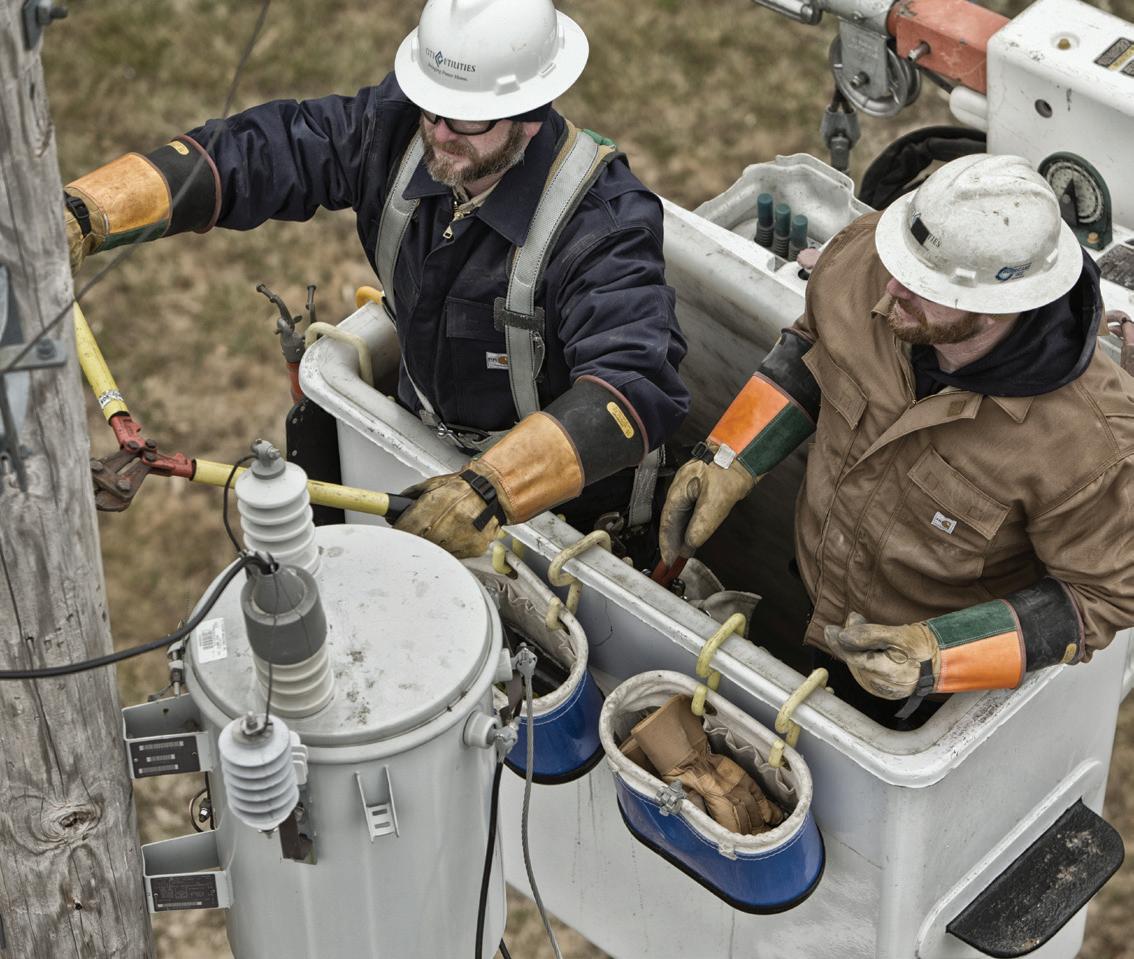
4 minute read
Top 10 FAQs
#1 What is flame resistance? Flame resistance is the characteristic of a fabric to resist ignition and to self-extinguish if ignited. Flame retardant refers to a chemical substance used to impart flame resistance. In reality, flame retardant substances are placed on fabrics to make sure they are flame-resistant. If exposed to electric arc flashes or flash fires, clothing made from most untreated (e.g., non-flame-resistant) fibers will continue to burn once ignited. In contrast, flame-resistant clothing is specially designed to self-extinguish within two seconds after the source of ignition is removed – thereby limiting the worker’s degree of burns and body burn percentage. Flame-resistant fabrics are not flame-proof; however, they are specially designed to be flame-resistant. #2 Who needs flame- and arc-resistant clothing? Anyone who works with a risk of ignition in the workplace. For instance anyone who works in a foundry or refinery environment, dealing with flame cutting and welding, firefighters, anyone in an aluminum casing or petrochemical industry, as well as electrical utility and the chemical, oil, and mining industries. #3 What is ATPV? ATPV stands for Arc Thermal Performance Value, which is a rating of the arc burn protection capability of a garment. The HIGHER the Arc Rating, the more protection a garment gives because it has a higher resistance to catching on fire. The ATPV is expressed in calories per cm2 and represents the thermal exposure from an electric arc that will create a second-degree burn in human tissue. #4 What is EBT? Like ATPV, Energy of Breakopen Threshold (EBT) is a rating assigned to flame-resistant clothing, indicating the level of protection provided. EBT is used when ATPV cannot be measured due to flame-resistant fabric breakopen. EBT is also measured in calories per centimeter squared (cal/cm2). #5 What flame-resistant clothing should I wear? The PPE Category protection level worn by a flame-resistant user should be determined by the user’s employer. The employer must do a risk assessment for the user’s job and inform them of the protection level needed. This should never be determined by the apparel manufacturer or the retailer. #6 Can I wash my flame-resistant clothing? Flame-resistant clothing can be home laundered. Please follow the manufacturer’s instructions attached to each garment. Do not use bleach or fabric softeners. Flame-resistant clothing is guaranteed to be flame-resistant for the useful life of the garment, regardless of the number of washings in either the home or industrial laundering, provided the garment care instructions are followed. If your flame-resistant garment becomes stained or soiled and you cannot confirm that the contaminants have been removed, it is possible that it has been compromised and should be removed from service. #7 Can I repair my flame-resistant clothing? Yes. Flameresistant clothing can be repaired, but repairs must be made with fabrics and sewing threads that have at minimum the same flameresistant properties as the original garment. #8 Can I layer my flame-resistant clothing? Yes, you can layer your flame-resistant clothing. However, the total arc rating cannot be determined by adding the ratings of the two items. In most instances, the total rating is actually higher than simply adding the arc ratings of both garments. Layered testing is the only method to determine total arc rating. #9 Can I use DEET on my flame-resistant clothing? No. DEET is one of the most effective mosquito repellents on the market, but it should only be used on the skin and not on flame-resistant clothing. #10 Can I add my logo to flame-resistant garments? None of the current regulations governing the use of flame-resistant clothing specifically require the use of flame-resistant thread for embroidery applications. However, we recommend the use of flame-resistant thread for embroidery or emblem attachments. ASTM 1506 allows nonarc-resistant logos as long as the design does not increase the extent of an injury.

What is a Hazard Risk Category? Hazard Risk Category is the level of arc flash protection clothing you must wear to protect against a minimum level of incident energy measured in calories per centimeter squared. Meaning, electrical equipment, depending upon the energy delivering capability, under fault conditions can cause an explosion, or arc fault of a certain level, again measured in calories per centimeter squared. That explosion can deliver a certain amount of heat to a certain distance. Each level, 1-4, is rated at a certain amount of flameresistance, again measured in cal/cm2. Each level is considered a category. (NFPA 70E)
Hazard Risk Category Clothing Description
Required Minimum Arc Rating of PPE Cal/cm2
Cat 1 FR shirt and FR pants or FR coveralls (1 layer)
4 Cat 2 Cotton underwear plus FR shirt and FR pants (1 or 2 layers) 8 Cat 3 Cotton underwear plus FR shirt and FR pants plus FR coveralls, or Cotton underwear plus two FR coveralls (2 or 3 layers) 25 Cat 4 Cotton underwear plus FR shirt and FR pants plus multilayer flash suit (3 or more layers) 40









